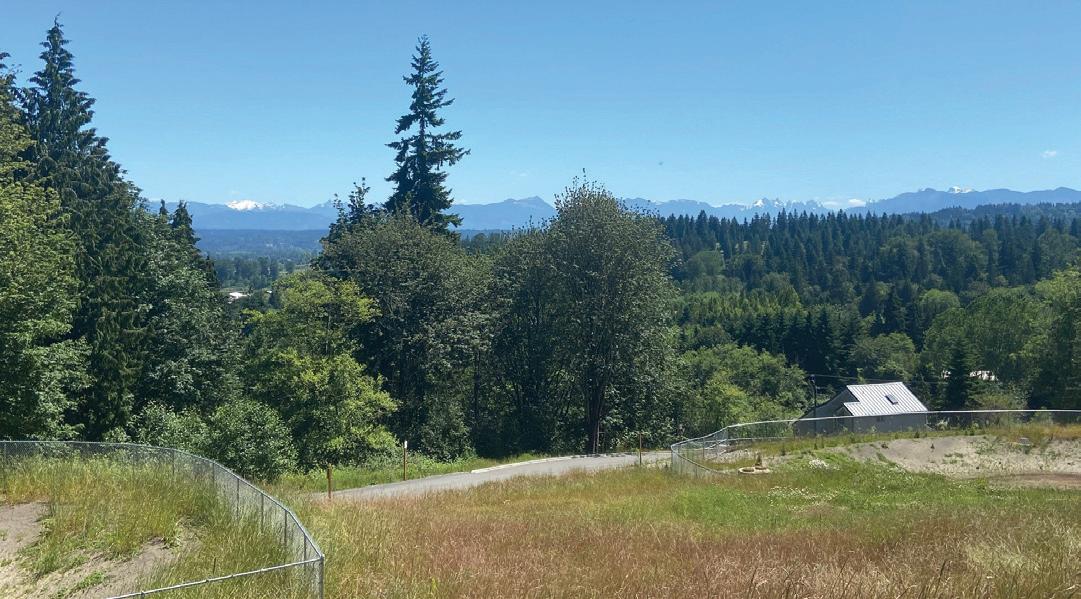
2 minute read
PAWS Wildlife Center
PAWS is pleased to announce that construction of the Wildlife Hospital and outdoor recovery habitats at the new PAWS Wildlife Center is now complete.
With these milestones complete, the PAWS Wildlife Center enters its final phase of construction including the Wildlife Care Unit and the Outdoor Aquatics Complex. Thanks to our generous community, momentum for this transformational project continues to build. Our fundraising efforts remain a top priority in 2023 as we work together to make this lifesaving, purpose-built campus a reality.
We look forward to keeping you updated on our progress and celebrating the opening of the new PAWS Wildlife Center. If you would like to tour the project while construction is underway, please email snohomish@paws.org.


Since the 1980s, PAWS has operated one of the largest emergency hospital and recovery facilities in the Pacific Northwest, designed to rehabilitate sick, injured, and orphaned wild animals and return them to their native habitats. It is the only center of its kind in Washington State equipped with immediate and continual veterinary expertise and services 365 days a year.
We have stretched to meet the needs of wild animals in our region, but we are now at a critical point of capacity. Aging wildlife facilities at our current facility in Lynnwood are at the end of their lifespan and in dire need of replacement.
The PAWS Wildlife Center in Snohomish has been designed to support the best care for wild animals. Hallways and doors are extra wide to allow for movement of staff, equipment, and patients. The HVAC system is engineered to minimize air exchange between rooms to reduce the risk of infection and disease. Interior windows allow staff to discreetly observe wild patients without entering rooms to disturb them. Large surgery and treatment rooms allow staff to move easily around animals and also facilitate veterinary students to assist and perform their own procedures while in training at PAWS.
The PAWS Wildlife team performs thousands of medical procedures every year, which has become increasingly challenging in the cramped surgery room at the Lynnwood facility. The current surgery is only 86 square feet in size, barely fitting one table, making some procedures –for bears and other large patients – very difficult.
The surgery room in the new PAWS Wildlife Center is 420 square feet and features two operating tables. With space for staff and the ability to complete concurrent procedures, PAWS is now equipped to conduct countless lifesaving operations – no matter the complexity or the size of the patient. Adequate space will no longer be an obstacle.
In addition to dramatically increasing the square footage of animal care areas, like the surgery room and radiology room, the newly-designed Wildlife Center also introduces entirely new spaces that do not exist in the current Lynnwood facility, including a wildlife waiting area where patients can settle before their first examination, an isolation room to provide flexible care space, an intensive care unit where sensitive patients can be closely monitored, and a treatment room where patients will receive specialized care.

The new treatment room will contain two wet tables connected to running water, allowing the PAWS wildlife staff to clean animals as needed. Our team can perform a variety of tasks in this space, like wound management, physical therapies, and examinations.
The new Wildlife Hospital alone is larger than the entire Lynnwood Wildlife Center. To be fully operational, a second building – the Wildlife Care Unit – and an outdoor Aquatics Complex are also needed to work in conjunction with the new hospital. These two buildings are currently under construction, and when completed, the new PAWS Wildlife Center in Snohomish will be more than twice the size of the current facility in Lynnwood. With so much well-designed space, PAWS will be able to respond more effectively to the growing and changing needs of animals in our community while also expanding training programs for veterinarians and wildlife care professionals.





